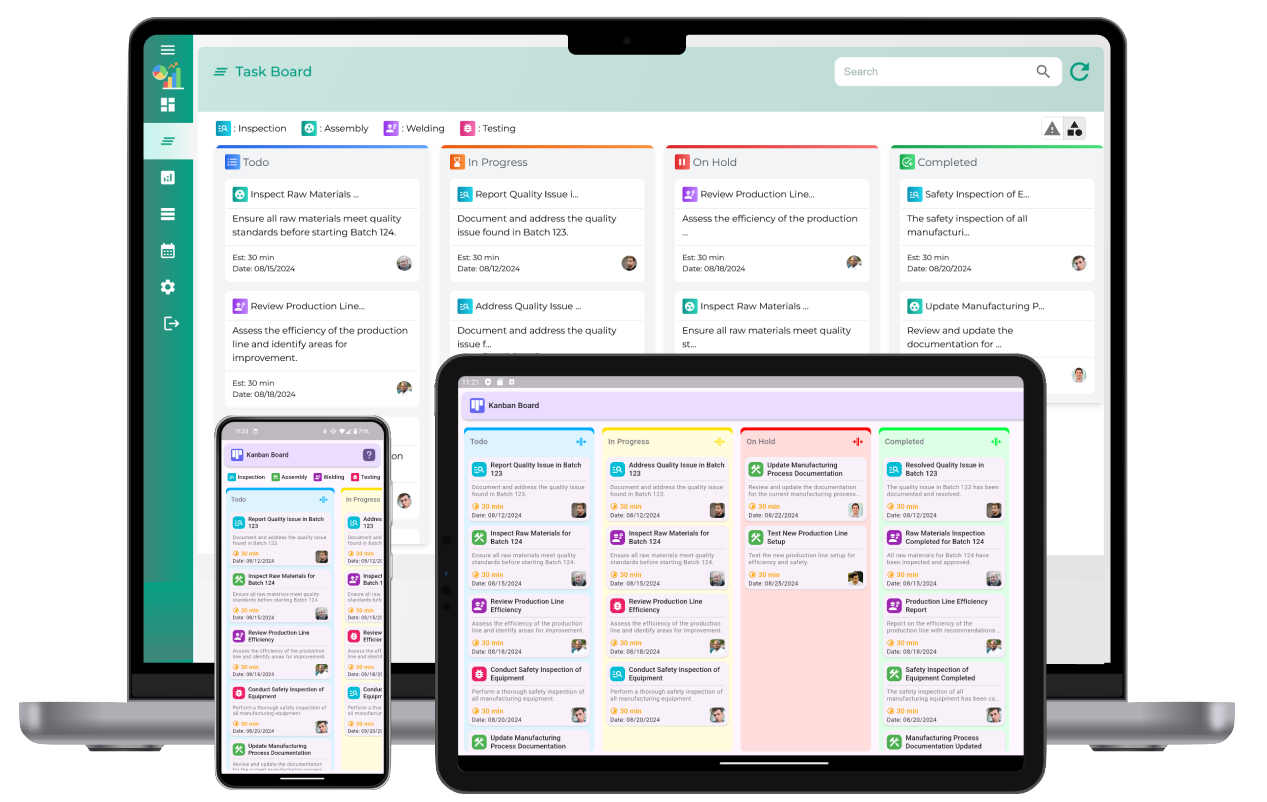What is Process Improvement, and why is it essential?
Process Improvement refers to identifying, analyzing, and improving existing processes to optimize performance, efficiency, and productivity. It is essential for achieving better outcomes, reducing waste, and meeting organizational goals.
How does Kanban contribute to Process Optimization?
Kanban contributes to process optimization by visualizing workflows, identifying bottlenecks, and enabling teams to manage tasks effectively. It supports continuous improvement by promoting incremental changes to processes.
Why is Process Optimization critical for organizations?
Process Optimization is critical as it enhances operational efficiency, reduces costs, improves customer satisfaction, and supports sustainable growth by streamlining workflows and eliminating unnecessary steps.
What are the key benefits of using Kanban for Process Improvement?
The key benefits include enhanced workflow visibility, reduced lead times, improved team collaboration, better resource allocation, and the ability to adapt quickly to changes or unexpected demands.
How does Kanban help visualize workflows and identify bottlenecks?
Kanban uses boards and cards to represent tasks and their statuses. This visualization makes it easier to track progress, identify stalled tasks, and address bottlenecks in the workflow.
How can you effectively manage WIP (Work-In-Progress) limits in Kanban for Business Process Improvements?
Setting strict WIP limits ensures that the team focuses on completing tasks rather than starting too many at once. This improves efficiency and prevents overburdening resources.
How does Kanban balance Demand and Capacity within a process?
Kanban helps balance demand and capacity by using WIP limits and workflow analysis. It ensures that tasks are only initiated when there is sufficient capacity to handle them effectively.
How can implementing Kanban improve processes in Project Management?
Kanban improves project management by promoting task prioritization, enhancing team collaboration, providing clear progress tracking, and supporting agile responses to changes.
What are the steps to implement Kanban for Process Improvement?
Steps include: 1) Visualize the workflow, 2) Identify bottlenecks, 3) Set WIP limits, 4) Monitor and measure progress, and 5) Continuously refine and optimize processes.
How does Kanban support Continuous Delivery and Deployment in Process Improvement?
Kanban enables continuous delivery by streamlining workflows, ensuring tasks flow smoothly through the pipeline, and reducing delays, which helps teams deploy changes more frequently and reliably.
What are the common challenges in Business Process Improvement with Kanban, and how can they be addressed?
Common challenges include resistance to change, poor WIP limit enforcement, and lack of proper metrics. These can be addressed through training, clear communication, and regular reviews of performance data.
Can you provide an example of how Kanban is used in Process Improvement?
An example is using Kanban in software development, where tasks like coding, testing, and deployment are visualized on a board. This ensures smoother transitions and quicker identification of delays.
Is Kanban suitable for all types of processes across different industries?
Yes, Kanban is versatile and can be adapted to various industries and processes, including manufacturing, healthcare, IT, and service delivery, to improve workflows and efficiency.
Which metrics should be tracked to evaluate the success of a Kanban implementation?
Key metrics include lead time, cycle time, throughput, and WIP levels. These provide insights into process efficiency and areas for improvement.
What are 5 key tips for successfully implementing Kanban for Process Improvement?
1) Start with a simple board, 2) Define clear WIP limits, 3) Regularly review and adapt workflows, 4) Use metrics for improvement, and 5) Foster team collaboration and feedback.
How does Kanban handle unplanned work or emergencies within a project?
Kanban handles unplanned work by adding it to the board in a dedicated swimlane or priority section, ensuring it is visible and addressed without disrupting the overall workflow.
